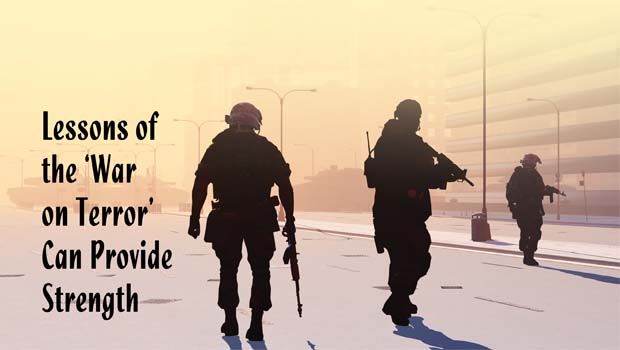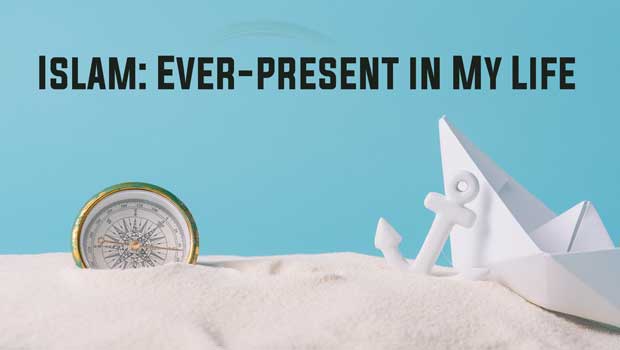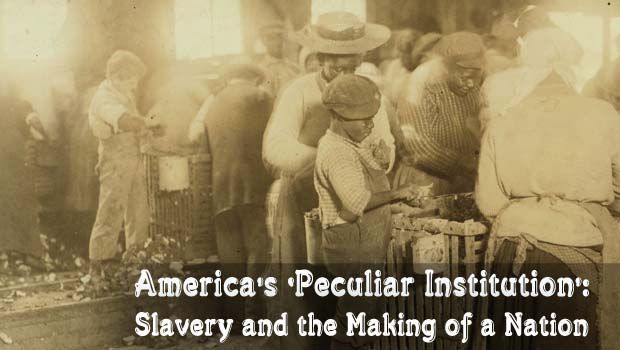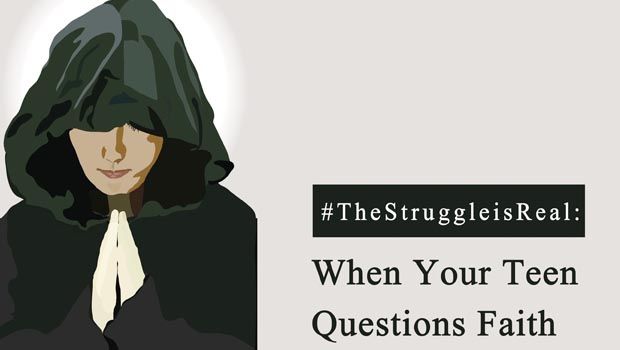Fifteen years ago, who would have foreseen that the United States government would be openly engaged in widespread assassinations around the world, “targeted killings” of individuals, including U.S. citizens, deemed enemies in the endless “war on terror,” without trial? The symptoms of the domes-tic war on terror, similarly, feel unreal. That a number of politicians and public officials in 2015 are openly calling for internment of Muslims or identity cards bearing our religion, without apparent detriment to their popularity, has many of us feeling shaken.
Why do the war on terror and parallel systems operate to marginalize and repress the voices of “minority” communities?
Government targeting of Muslims, and the public animosity the war on terror has directed against our communities, have been tremendously isolating. Following recent attacks in Paris, many have commented that the climate of bigotry and rates of hate crimes against Muslims may be at their most in-tense levels since immediately after the World Trade Center attacks in 2001. Within our Muslim com-munities, morale is low, and fatigue and anxiety about our future in the United States is high.
But a cursory look at history demonstrates that our current experience, while it may feel unprecedented to many of us, is far from unusual. The war on terror today provides an infrastructure to re-press political dissent, like so many systems before it. If we are to remain resilient in our determined efforts to stop this endless war, and its accompanying erosion of civil rights at home, we must under-stand the parallels to previous times of repression and the elements that inevitably come into play. Only in that way can we build solidarity and collaborative strength with other targeted communities.
‘Countering Violent Extremism’ (CVE)
Before discussing historical and contemporary parallels relevant to the war on terror, it is useful to ex-amine a broad-based campaign heavily informing our current experience in the United States, as well as in Australia, Canada, as well as many countries internationally: “countering violent extremism” or CVE.
If there is an empowering lesson, then, to be drawn from the escalation of the “war on terror,” perhaps it is that policymakers recognize our growing potential to secure influence.
CVE represents one of the latest forms of interference in Muslims’ self-determination and privacy within the war on terror. It is based on empirically debunked ideas that ideology increases propensity for violence, and that identifying supposed “vulnerabilities” to “extremism” can help predict and pre-vent violence. Through CVE, the U.S. government seeks to outsource ideological profiling and deprogramming to teachers, school counselors, psychologists, public health professionals, and other social services providers — encouraging these trusted professionals to view First Amendment protected activity, or routine adolescent behavior, as pre-criminal indicators of so-called radicalization or “extremism.”
The language promoting CVE is calibrated to resonate with social service professionals’ deep commitment to the well-being and success of their patients, clients, and students. As a counterterrorism lexicon would likely raise red flags about CVE’s incompatibility with missions to promote health and education, in the United States — as in the U.K. before us — euphemisms like “community resilience” are often used to promote CVE.
The ongoing war on terror must also lead us to more a critical understanding of race.
Whereas many Muslims have grown accustomed to believing our religious gatherings and even secular events are likely to be monitored by law enforcement, CVE has further eroded our expectations of privacy such that many of us are uncertain under what circumstances the utilizing of social services will remain safe and confidential. CVE seeks to permeate the last vestiges of normal social interaction, privacy, and dignity for our communities — our schools, our interactions with trusted health care providers, and even parent-child relationships.
Historical Parallels
War on terror practices have numerous parallels in American history. Contextualizing the targeting of Muslim communities today is instructive for understanding the nature of the domestic war on terror.
Shortly after the Russian Revolution and the end of World War I, at a time of heightened social activism, the U.S. government carried out the Palmer Raids of 1919-1920 against suspected anarchists, communists, and leftists. Led by U.S. Attorney General A. Mitchell Palmer, the campaign imprisoned, without access to counsel, thousands of U.S. citizens, and deported hundreds of immigrants without due process. The Palmer Raids were directed primarily at minorities suspected of disloyalty — especially German, Irish, and Russian immigrants — and were, of course, only one piece of the Red Scare era that treated political “radicals” as national security threats.
A later shameful manifestation of American policing of suspect communities was the internment of Japanese Americans during World War II. Following the attacks on Pearl Harbor by the Japanese military, President Franklin D. Roosevelt suspended certain constitutional protections through Executive Order 9066, allowing for the military to designate areas from which “any or all persons” could be excluded. Approximately 120,000 Japanese Americans living on the West Coast of the United States — the majority U.S. citizens — were relocated to concentration camps where they were held, for years, without opportunity to challenge their incarceration. These egregious violations of Japanese Americans’ human rights were ostensibly motivated by national security concerns, though Japanese Americans themselves were often told the relocation was for their own “protection.” Today, this episode is widely understood as a result of intense racism and irrational fears about Japanese Americans’ loyalty to the United States. Yet, it is clear from recent calls for internment of Muslim Americans that the repugnance of rounding up and interring Japanese American citizens has not been universally acknowledged and condemned.
During the Cold War (the period following WWII, up to the early ‘90s), the FBI pursued the covert COINTELPRO (Counter Intelligence Program) to infiltrate, disrupt, and undermine the political activism of a number of perceived radical groups. Launched in 1956, the program focused on communist and socialist groups as well as antiwar activists, Black liberation activists, and civil rights leaders including Martin Luther King and Malcolm X, the American Indian Movement, advocates for Puerto Rican independence, feminist groups, and others. The program officially ended in 1971, but its tactics have echoes in modern surveillance of antiwar, Black liberation, and other activists. For contemporary activists, COINTELPRO’s stratagem of sowing mistrust and factionalism within activist movements to debilitate them, continues to bear lessons for movement organizing.
These historical episodes help underscore that abuse of the human and civil rights of targeted com-munities and groups — often through suspension of constitutional protections — have frequently been justified with appeals to national security. Yet, disclosure over the decades since WWII, through declassified internal government documents, academic research, independent investigative journal-ism, and the testimony of whistleblowers, demonstrates that the motivation behind these programs and policies was instead the undermining of political dissent and the freedoms of speech, press, and assembly.
Contemporary Parallels
We need not look further than the present day to understand the ways the struggles of various tar-geted communities are intertwined. While the exact tools of repression and political control vary, there are similarities between the treatment of Muslims in the domestic war on terror and the treat-ment of other racial minorities — in particular Black and Latino Americans. The new Jim Crow system ensnares Black Americans and other minorities in a complex of discrimination and vastly disproportion-ate incarceration, denied rights as veritable second-class citizens; and racialized immigration enforcement against Latino Americans constitutes an additional prong of an American racial caste system.
Clearly, just as slavery and Jim Crow (the system of anti-black laws in place following the abolition of slavery in the 19th century, through to the mid-20th century) obstructed Black Americans’ political voice and extracted profits from their forced labor, modern systems such as gang watch-listing, the school-to-prison pipeline, racialized policing and the “war on drugs,” mass incarceration, disenfranchisement of the formerly incarcerated, and surveillance of Black Liberation activists perpetuate Black Americans’ political marginalization and repression. Mass incarceration fragments Black American, including many Black Muslim, communities — arguably more directly than the division of Muslim communities through war on terror surveillance — by physically separating families.
Latino influence in the United States is similarly repressed through discriminatory immigration laws that racially engineer our populace. Latino immigrants face heightened barriers to documentation and citizenship compared to many other groups. Aggressive prosecutions and long sentences for victim-less immigration offenses (such as “entry without inspection”) disproportionately target Latinos and thereby inflate Latino incarceration rates. “Local enforcement” deportation programs like the “Priority Enforcement Program” or “PEP” (formerly known as “S-Comm” or “Secure Communities”) also dis-proportionately target Latinos. The disruption to Latino communities of ongoing family separation through deportation — often to countries where deportees’ lives may be endangered — cannot be overstated.
Many Muslim immigrants have also experienced our immigration system being wielded to suppress our political participation under the war on terror. For Muslims, of course, discriminatory immigration practices are predicated on national security pretexts. For example, under CARRP (the “Controlled Application Resolution and Review Program”), wrongful delays and effective denials of Muslims’ immigration and citizenship applications result from immigration officials’ deference to intelligence agencies — primarily the FBI. The fact that CARRP’s victims are generally not found to have any background warranting deportation, but are allowed to languish in the United States for years without approval of their applications or explanation for effective denials, undercuts the claim that CARRP advances national security. CARRP does, however, suppress rates of Muslim citizenship.
Impacts on Our Communities of the Ongoing War on Terror
It is not surprising that the war on terror has diminished our communities’ capacity to effectively organize and advocate. When, at the start of this “war,” Muslims came under increasing attack in public discourse and through government practices, many initially found our spaces of worship to provide sanctuary. But as it grew clear that mosques and Muslim Student Associations had become spaces of government surveillance, many who once took comfort in our prayer spaces have been alienated by a sense that these places of religious dedication and social participation no longer belong to us, but have been leveraged as law enforcement tools. In the current phase of this ongoing “war,” CVE pro-grams threaten to destroy the remaining privacy and dignity for Muslim communities in the U.S. and internationally — as they have already begun to do, for example, in the UK.
Widespread suspicion of Muslims is not only an external societal challenge; extensive use of inform-ants and, now, CVE campaigns that threaten to intensify divisions among those law enforcement agencies view as “Good Muslims” and “Bad Muslims,” have undermined our community cohesion, as well. We face a danger, born of repeated targeting, of further internalizing our suspect community status.
What Sort of Threat Are We?
Why do the war on terror and parallel systems operate to marginalize and repress the voices of “minority” communities? There is, of course, no finite set of architects of the war on terror, the “war or drugs,” or the new Jim Crow. But when any community’s or activist group’s advocacy is viewed as threatening to existing power structures, policy choices will reflect fear of, and the impulse to quash, their dissent and their ability to coordinate and organize for change. One possible way to understand the war on terror, then, is as an accumulation of laws and practices reflecting fear of Muslim power and seeking to limit Muslim influence, domestically and internationally.
As Muslims, many of us have family and friends living in Muslim-majority countries that have the un-sought distinction of being of particular strategic interest to the United States. Because so many Muslim-majority countries bear witness to, and suffer, the effects of western imperialism, Muslim power threatens to educate the broader western publics about these impacts and spark a discussion about the role of state violence in perpetuating conflicts. Advancement of climate justice and human rights — in particular, accountability for state and corporate violence and equitable enforcement of international law — may be perceived as threatening to western hegemony. The war on terror operates domestically to fragment, isolate, and disempower communities so that many are afraid to vocally object to foreign policy and mobilize for change. It is no coincidence that CVE in the U.K., under the name of “Preventing Violent Extremism” or “Prevent,” has labelled misconception and/or rejection of UK foreign policy” as a so-called grievance which “may play an important part in the early indoctrination of vulnerable individuals into the acceptance of a radical view and extremist ideology.”
Muslims’ status and targeting as a perceived political threat is, of course, not unique. Muslim and Latino immigrants alike are witnesses to the impacts of the international “wars” on terror and drugs, of American corporate practices, international trade policies, and the conduct of foreign regimes sup-ported by the U.S. government. The primary targets of the new Jim Crow — Black Americans, including Black Muslim Americans — are also authoritative witnesses to the impacts of the “war on drugs” and domestic state violence. Black Americans’ continued subjugation, over-policing, and mass incarceration accrues profits to the prison and military industries and supplies cheap prison labor. Domestic counterterrorism policies, meanwhile, operate to chill Muslims’ dissent against international war on terror campaigns like the drone program, which kills numerous civilians, and U.S. government support for authoritarian regimes with abysmal human rights records.
Strength in Connecting Struggles
The vehemence of attacks against Muslim communities, and the ubiquitousness of discourse discussing Muslims as fascinating objects to be analyzed, subdued and “integrated,” suggest our power is viewed as a growing threat. If there is an empowering lesson, then, to be drawn from the escalation of the war on terror, perhaps it is that there is a growing recognition of our potential to organize and mobilize for change. Why else would CVE seek to extend ideological deprogramming into our children’s schools, our doctors’ offices, and our family relationships? Why else would social media, a tool so powerful in the unfinished Arab Spring, be increasingly portrayed as a potential vehicle of “material support” for terrorists or a dangerous brainwashing tool?
Our American Muslim history is inextricably tied with social justice struggles — in particular the struggles of Black Muslim Americans — that long predate the war on terror. We have, therefore, within our American Muslim communities, tremendous experience and expertise to guide us in this struggle. We must also listen to other targeted communities to better understand their struggles and to join and amplify our collective voices in order to more effectively combat the efforts to censor and silence us.
The ongoing war on terror must also lead us to more a critical understanding of race. The purpose of “whiteness,” in a caste system, is its supremacy, and white supremacy cannot exist without relation to other, subjugated races. “Whiteness,” in other words, is not an incidental feature of birth, genetics, and cultural identity, but a wedge, advancing an agenda to divide communities with shared interests. This division is accomplished by encouraging the silence of those who benefit from white supremacy, and creating an environment of fear and fragmentation among those who suffer discrimination, and pressures to distance themselves from other “suspect communities.” A racial caste system will always divide us, sabotage effective organizing, and perpetrate ongoing injustice against the most targeted members of our society. Rather than seek advancement within this caste system, we must all commit to dismantle it.
When communities are isolated, dehumanized, and vilified in an attempt to prevent their influence, a commitment to engage in ideological “moderation” is no solution. The abdication of radical politics will only allow for the continuation of destructive policies and practices we have the power and obligation to change. This is not the time to restrain urgent calls for human rights and justice. When asked about “our solution” to the problems the terror and drug wars ostensibly seek to end, let us have the courage to reframe the question. Let us speak boldly together about the imperialism, environmental devastation, and state violence that endanger our communities and feed conflict. Let us join our struggles and reclaim our power together.






